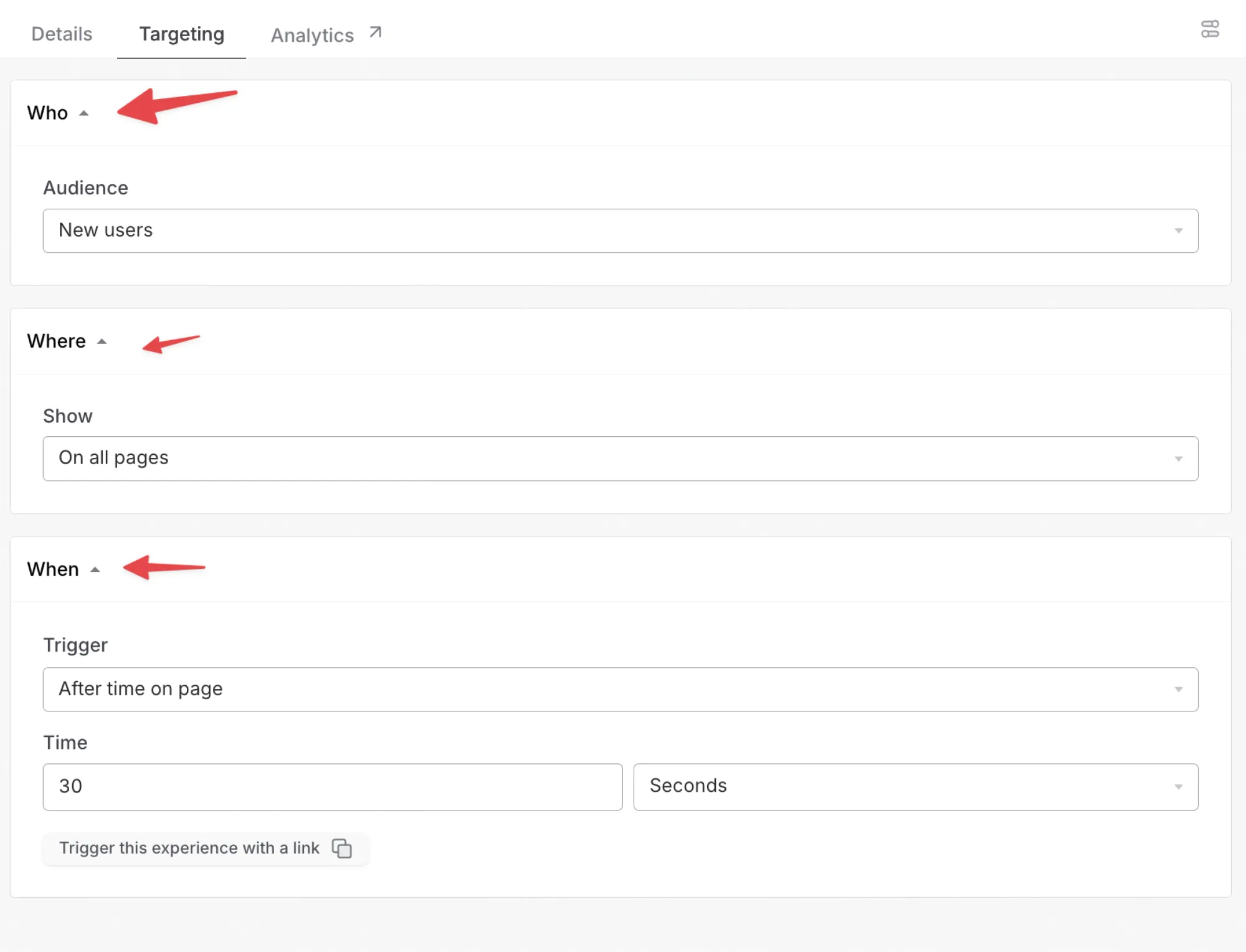No one wants to live or die; no SaaS business should operate in vain. Vanity metrics can be a surprisingly dangerous pitfall and sinkhole for your business to fall into because they give you the confidence of success and performance when, in fact, they may be hiding deep-rooted issues.
These vanity metrics can look highly impressive and may even indicate some actual success. Still, you must understand your full business performance using objective, actionable metrics that deliver the necessary core insights with complete context.
So why do folks fall into this vanity metrics trap? Well, it's because they can often be sexy and high-level. For example, high growth rates, high conversion rates, or big jumps in revenue can seem exceedingly positive, and it's easier to seize on these than it is to dig deep and understand potential issues or downsides for a situation.
The psychological satisfaction from seeing growth is alluring and can lead you to ignore potential issues, which later cause churn and failure. You don’t want to be this guy!

When you solely focus on these vanity metrics, you ignore actionable metrics that are better markers and indicators of actual business performance and sustainable growth.
Identifying and Understanding Vanity Metrics
Let's discuss what vanity metrics to look for and how to identify them. Vanity metrics might look good, but they don’t provide a complete picture of your business or that specific area of the company.
Examples of vanity metrics might include:
- Your total number of active users or downloads
- Website traffic trends
- New leads
- Social media followers
- New revenue (yes, even new revenue!)
Now, celebrating growth in these areas is not inherently flawed, and in many cases, that might be quite a good sign for your business! But without full context, and when focused exclusively or optimized for, they can be misleading. That's because these numbers don't necessarily tie back to the core trends within your business.
For example, a growing number of users indicates your business's health.
But if you dig deeper, you might find that you're losing high-value clients to churn, and while you're bringing on lots of new users, they're primarily on free or low-cost plans.
Or, for example, if you have high growth and user acquisition but then face huge churn issues just a few days, months, or years after users enter your business, that's not a healthy situation for your business, regardless of how great new signups look!
These vanity metrics don’t paint the whole picture and give you a sense of how users are engaging with your company over the long term and of your business's actual results.
The Risks of Vanity Metrics
The first is about false positives. When you sense that things are going well and moving in a specific direction, you might be more likely to invest in a particular area, take a specific course of action, or embark on a new strategy based on that.
For example, suppose you see that you're launching a new campaign in a new marketing channel and that user acquisition is very high. In that case, you might immediately reevaluate your marketing spend and put more resources there. What you need to realize, observe, and wait for is that the churn will be high in the next couple of weeks, and users from this channel, while more likely to join, are less likely to retain and have a higher churn rate.
So, it is essential to keep a complete picture and avoid confirmation bias or false positives that can lead to misallocating resources.
Another way to think about vanity metrics as a pitfall is how you can invest your resources, particularly if you're a startup. You have a limited engineering workforce and a limited amount of money to spend.
You're ultimately forced to invest where you best see fit. If you use these vanity metrics to guide your decision-making and your product roadmap, you can end up with a misguided and misbuilt product engineered for the wrong results.
Finally, the obvious one that we talked about is the churn rate. If you have high user acquisition but a churn issue, the user acquisition means little.
The Power of Actionable Metrics
Let's discuss why actionable metrics are much more potent than the standard. Actionable metrics are clear metrics that provide better context, are more informed and holistic, and allow you to make the most informed product and business decisions.
Some of these metrics inherently calculate multiple stages within your business.
LTC: CAC
For example, your LTV to CAC ratio compares the lifetime value a customer produces against the cost of acquiring that customer.
Here, you get one side of the engagement and retention point and both.
MRR (broken out with/ churn and downgrades against retention and expansion)
Another one is monthly recurring revenue trends. Now, you might pause here and say that you didn't mention that revenue can be a metric.
That's true if you're only looking at new revenue. But when you look at MRR in the context of both acquisition and expansion against churn and downgrade, you have a more complete picture of your revenue.
Real User Feedback and Insights
Other practical methods include direct feedback from user input and user intent data, such as NPS, CSAT, CES, and other survey-based data points.
To do this effectively, you must adequately Target and structure your surveys for maximum engagement and accurate feedback. This means segmenting your user base, only targeting relevant ones, and ensuring you're triggering it at the right time. Usually, this means using a generic spray-and-pray approach and user behavior or event triggers. For example, you can trigger a CES survey after the user completes a particular flow or event or ask an NPS question before or after a user enters or completes a workflow.

These user behavior-focused smart triggers can be extremely helpful in ensuring that your surveys don't suffer from non-response bias and frustrate users.

Overall, actionable metrics are holistic, in context, and weighed against other data points. It's not just about the metric; it's about the mindset with which you view metrics.
If you do this correctly, actionable metrics can help you identify the right areas of your product to improve, where to allocate resources, and give you a more precise roadmap to creating happier and more unique users for better products.
How to Identify Actionable Metrics
Let's talk quickly about how to identify actionable metrics within your business. This is a simple framework. When you're looking at a specific metric and weighing it against different areas of your business, ask yourself:
- Does this metric offer actionable insight that is in context and holistic?
- Is this directly tied to both revenue, retention, and satisfaction?
- Does this metric relate to our sustainable business growth?
- Does this pass the BS test?
When you run a metric through these different criteria, you can better determine whether it's an energy metric or an actionable metric.
Getting Your Team on Board with Actionable Metrics
Let's discuss how to escape this vanity trap and get your team on board by focusing on actionable metrics. This is the hardest part.
It's pretty hard to convince your team to focus on these metrics because so many folks, including leadership, have been focused on these vanity metrics for so long. They look at new signups or and new deals closed, and often, their incentives are aligned with those numbers!
You want to see how many new products we shipped, how many new deals we closed, and how many leads I brought in.
It can often be about that top-of-funnel work, but your objectives need to be linked to long-term growth, profitability, and retention.
So, make sure that your actionable core metrics and KPIs are focused on your core business goals, which are sustainable and repeatable. Segment all of your data across different user bases within your product or product features, which can help you better identify whether specific areas or issues within your product are driving sentiment, retention, and churn.
All of this is made more accessible when you clearly understand your user personas and their user journeys and have a team and a strategy to optimize the UX and the CX. You may have an experimentation framework that allows you to do AB testing!
Together, this can give you more granular and accurate actionable insight and data.
Conclusion
While you should collect lots of data points using different metrics, it's essential to focus on those that are the most holistic and balanced to ensure that they are actionable and insightful to your business's reality. Despite how positive they may seem, vanity metrics can fall short of that and Lead You astray. One of the best ways to keep your vanity metrics manageable is to gut-check yourself with honest user feedback and data you can easily collect through Command AI.

















